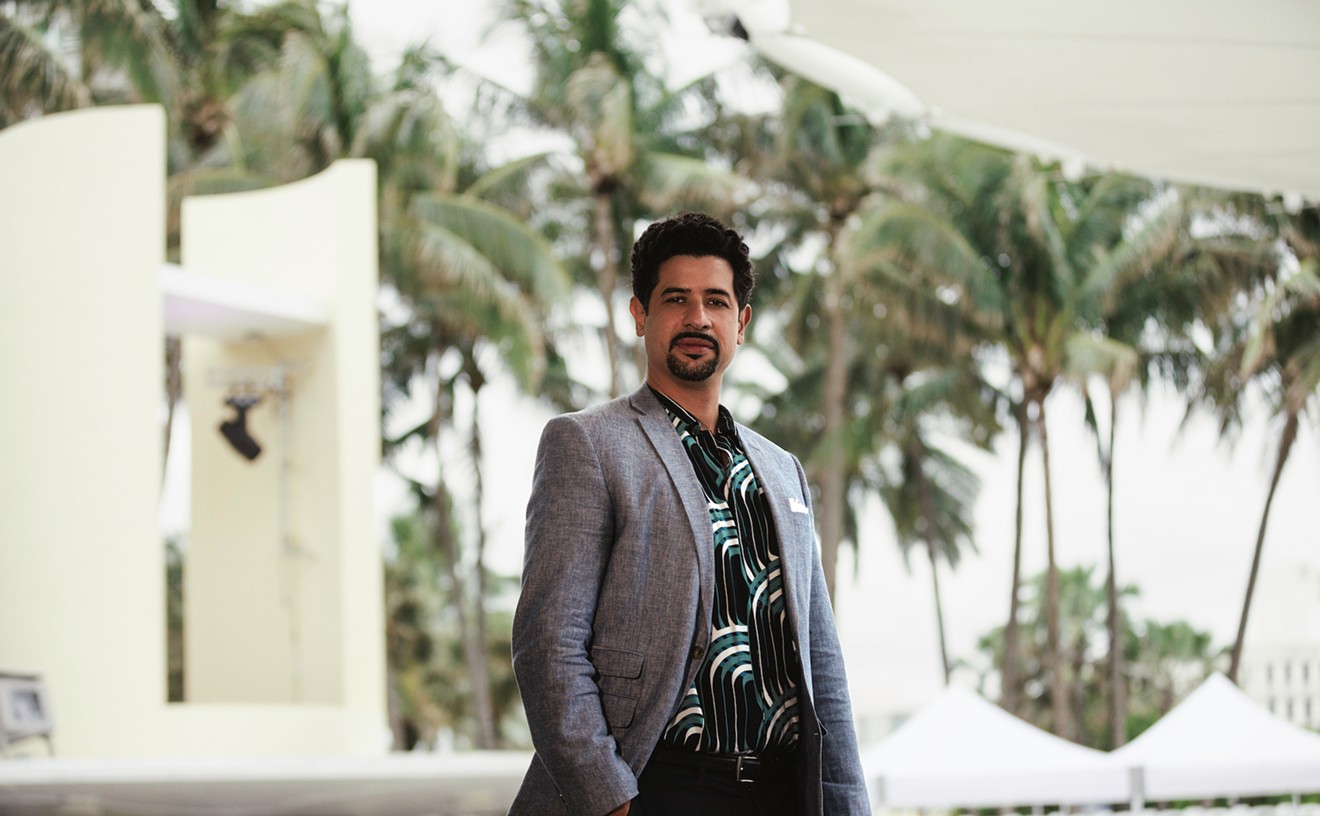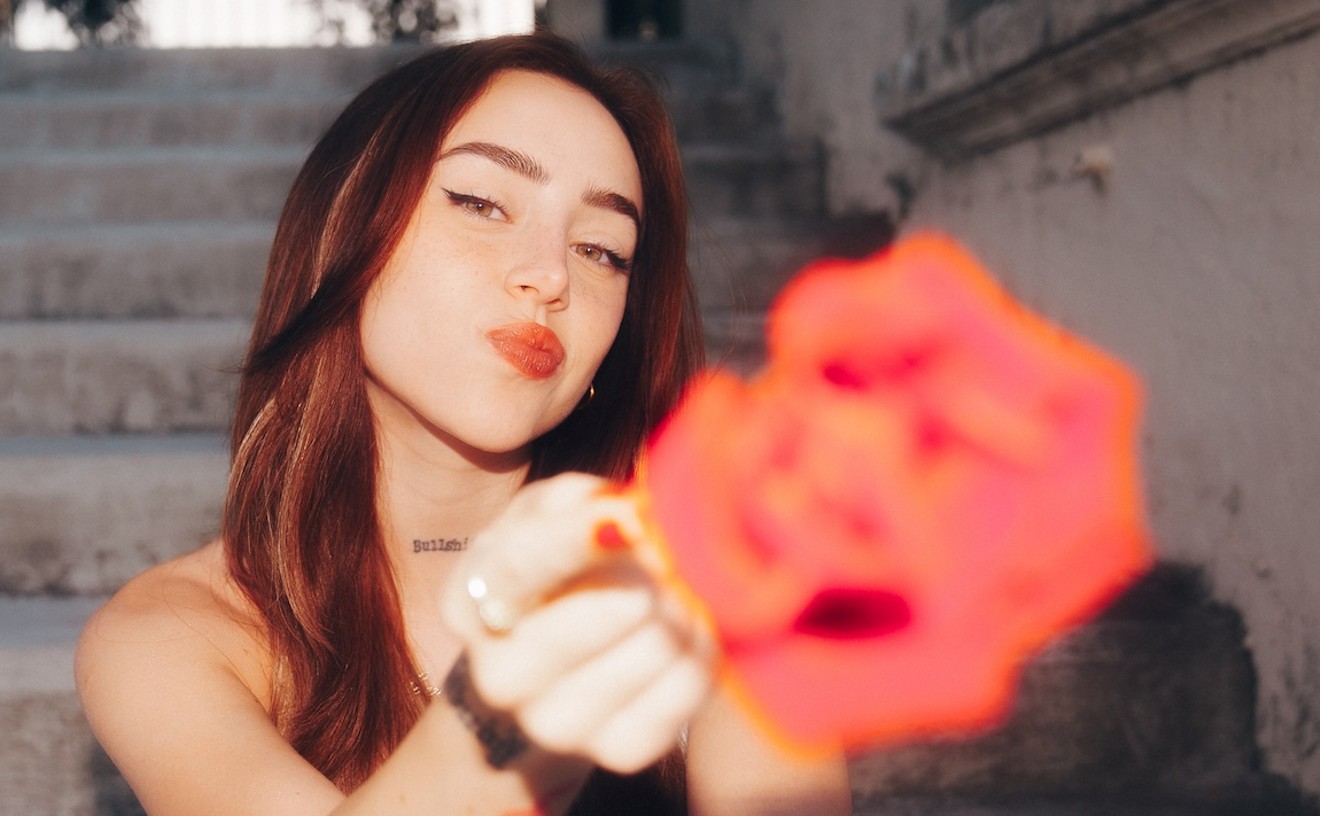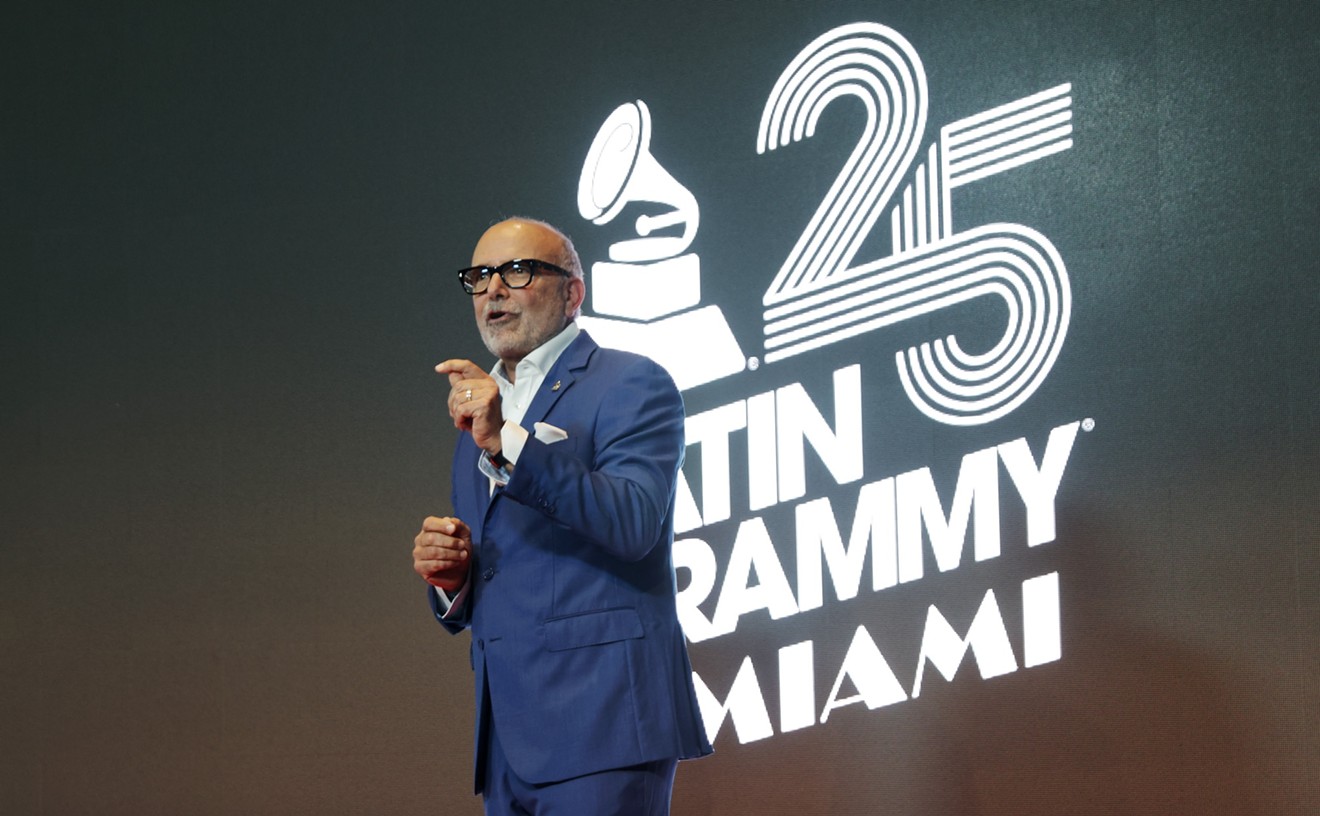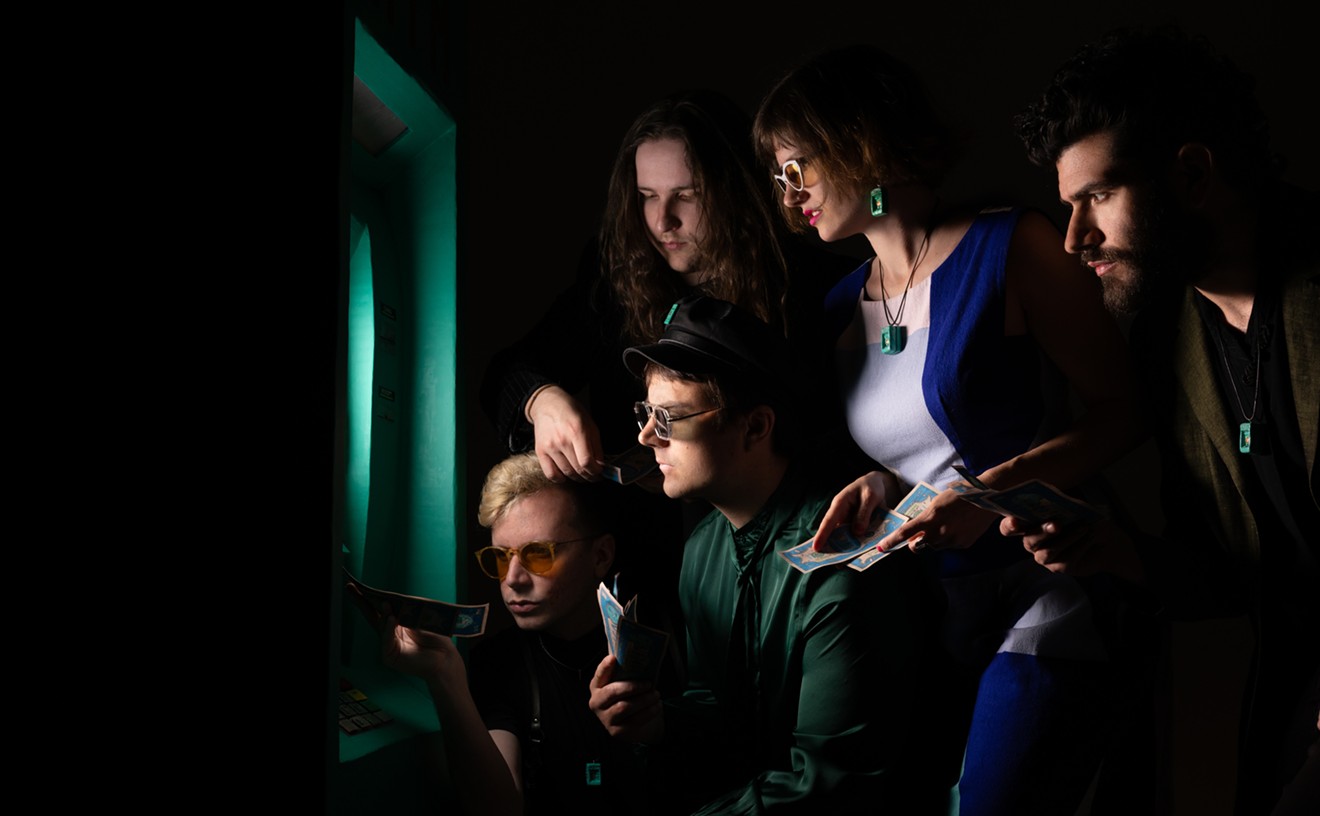Back inside the club, a handful of guys in black jeans and bandannas, bottles of Guinness in one hand and spliffs in the other, sing snatches of hits by Sizzla, Bounty Killer, and Sade and dancehall classics, moving to the blinging digital drum and bass effects that whip from two towering columns of speakers. Trophies for the winners of the night's soundclash competition wait in a cardboard box, watched over by a sloe-eyed man in his late twenties. Yelling in my ear, he introduces himself as Super Force. Explaining he has four kids and is struggling to find enough work as a landscaper and mason, he offers to build me a house.
More people come inside the gate as DJ Sunshine, a beautiful girl who smiles as she spins, comes up to the plates. She's accompanied by a selector with a growl so gruff he sounds like Linda Blair in The Exorcist. He alternates raising his fist and shouting "Rastafari!" with delivering rude rhymes about women's parts, inciting the females in the audience to work it. The provocatively dressed girls throw their hands in the air and dance together in front of a wall of speakers on one side of the paved floor.
Most of the crowd here tonight is from St. Andrew, a group of small towns and villages in the Blue Mountains just above Kingston. Here, as down in the inner city -- where in the Seventies the term "dancehall" was adopted to describe the music of sound-system DJs toasting over records -- Friday night is the biggest party night of the week. Sound systems, the central force of Jamaica's music, are competing all over town in clubs and at outdoor spots like this one, set on outdoing each other with the most innovative versions of popular tracks, streaming rhymes about sex, cash money, and spiritual salvation in one set. Though they may warm up with strains of the shuffling reggae rhythms that most foreigners identify with Jamaica, the dancehall beat that follows is machine-gun fast, the DJ's language critical of the island's political and social ills, rough and boastful or just obscene, and largely unintelligible anyway to an American.
The night wears on, and so does the dancehall. The inflammatory good-time rumble of the music reverberating in the hills is accompanied by the roar of street drag races and occasional gunshots from down below. The audience at the mountain soundclash on this Friday show their enthusiasm for their favorite DJs by turning aerosol cans into blazing torches, holding them up high.
When the weekend starts, downtown Kingston gets busy with shoppers coming in from far outside Town. Today is also Valentine's Day, and you can't run from love, at least in the form of giant white teddy bears wrapped in cellophane and bunched together cutely on tables, and transparent thongs hanging from racks shaded from the sun by umbrellas. Many of the shoppers show their romantic spirit by wearing red. (One guy who lopes by with a three-inch switchblade in hand doesn't seem to feel the sentiment.) The air is hot and choked with bus fumes on the crowded sidewalk, where people sell designer knockoffs and household goods from cluttered stalls outside the market shopping arcades.
At a record shack, mixed CDs and sound-system compilation tapes, with photocopied covers made in the home studios of local DJs and producers that are as numerous as jerk chicken shacks in Kingston, are stacked on the shelves of fruit crates. A high school girl shops for a gift for her sweetheart. Inserting a mixed CD into the vendor's relatively small sound system (only four midsize speakers stacked on the ground), she listens to all of the songs on one compilation of syrupy soul and R&B, and finally satisfied, makes her purchase. The proprietor, an unsmiling guy with short braids and a bright red T-shirt, digs in a pile and puts on a dancehall compilation that includes versions of tracks by Buju Banton, Busta Rhymes, Capleton, and Beenie Man and Missy Elliott. Passersby move to the beat and the dreadlocked vendor from the Kangol stall gets up and dances on top of the overturned bucket he uses as a stool. A little boy who has stopped by with a garbage bag full of ganja starts twirling around, crazily waving his bud-cutting scissors in the air.
Ocho Rios is on the other side of the island and in another world, one of roots reggae and pink tourists eating the fast-food version of jerk chicken at Island Grill franchise restaurants. I visit Reggae Explosion, located at Island Village, a waterfront shopping and entertainment center. Though the name sounds gimmicky, Reggae Explosion is actually an intriguing exhibition of the history of Jamaican music with exceptional photography, intelligent text, and listening stations. (Also highly recommended is the book of the same name by writer Chris Salewicz and music photographer Adrian Boot.) The exhibition includes candid photos taken by Boot and others, with an emphasis on Jamaican music's spectacular Seventies era; the images in a section on Bob Marley strikingly remind one of his rock-star appeal. Also on display are record covers from (as seen in Dr. No) Byron Lee and the Dragonaires' Reggae Fever and Dennis Alcapone's Guns Don't Argue to Rudest's Slacker Than the Rest, to name a few. A section on Jamaican artists abroad provides consistent precedents for the current success of Sean Paul and Shaggy, the earlier collaborations between rock and reggae artists providing a parallel for the hip-hop and dancehall relationships of the present. Mento, ska, dub, dancehall, and roots-rock reggae are among the genres explored, showing how the island's music developed on the street and in the studio.
"The transistor radio marked a turning point for us in Jamaica," says Neville Garrick, who accompanies me through the exhibition. He pauses in front of a replica of a Seventies street-corner bar, complete with vintage bottles of Red Stripe. "Before, we only had one station, you could only turn it up or down. With the transistor, we could pick up stations from New Orleans. In trying to copy the Americans we ended up developing our own laid-back beat. Everyone did covers, Bob Marley did too." Garrick, a Kingston native, attended UCLA, where he joined the Black Panther Party. Back in Jamaica in the mid-Seventies, he embraced Rastafarian beliefs and became Bob Marley's art director and a member of his touring entourage. There's a photo of Garrick in the exhibition, standing in the ocean with waist-length dreads and boombox to his ear, and another of him playing soccer with Marley's band the Wailers in a match against Island Records employees.
Garrick pauses by a wall full of 1940s party invitations printed on 4x5 cards. "The groups didn't have access to radio stations, so to get their music out there the promoters would give dances on weekends," he says. "The term 'dance hall,' of course, originally referred to the place."
He strolls to a display that charts the sound system's history back to the Forties. A black-and-white photo shows a smiling selector in plaid flares and a camouflage cap at a sidewalk sound system, mike in one hand, manning the stereo's control knobs with the other while a DJ puts on an LP. "The sound system is the heartbeat of Jamaican music," Garrick says. "It just took over after Bob Marley's death and it's ruled ever since."
A section on DJs explains how selector Count Machuki is credited with starting what would become the signature of the dancehall sound, talking over records. He just improvised one day, legend has it, copying the fast vocal stylings of American DJs he heard on the radio. Today his innovation lives on in the ragged dancehall beat coming out of the huge speakers set up on street corners and leaking from passing cars. The mix of slackness and social consciousness, and the spiritual sentiments of roots reggae commingling with the thug attitude of hard-core hip-hop seem logical given the constant recycling and reinvention inherent throughout modern Jamaican music. "That's how rap music started in Jamaica," Garrick points out, "on a street corner in Kingston."










